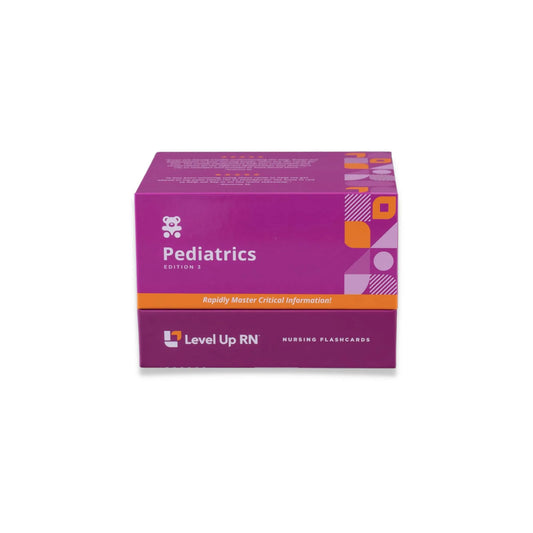Hi, I'm Cathy with Level Up RN. In this video, I will be discussing gastroesophageal reflux or GER. And at the end of the video, I'm going to give you guys a little quiz to test your knowledge of some of the key points I'll be covering. So definitely stay tuned for that. And as always, I will be following along with our Level Up RN pediatric nursing flashcards. So if you have our flashcards, go ahead and pull them out so you can follow along with me. With gastroesophageal reflux, we have the backflow of stomach contents into the esophagus. And in children, this is typically caused by excessive relaxation of the lower esophageal sphincter, which is a ring of muscle that normally prevents this kind of backflow. And then there are a number of factors that contribute to GER in infants. So first of all, their lower esophageal sphincter is underdeveloped. And then second of all, they consume a primarily liquid diet. And then third, they spend a lot of time on their back. So all of these factors make it really easy for that liquid to backflow into the esophagus. Signs and symptoms of gastroesophageal reflux in infants include spitting up, crying, arching of the back, failure to thrive, and respiratory difficulties.
In children, GER can cause signs and symptoms such as dyspepsia, which is a fancy name for indigestion, regurgitation, chest pain, dysphagia, which is difficulty swallowing, and a chronic cough. In terms of diagnosis, the provider will review the child's medical history and symptoms, and then sometimes diagnostic tests may be ordered, which can include an upper GI series, esophageal pH monitoring, or an EGD. So with an upper GI series, which is also referred to as a barium swallow, the child will swallow a liquid that contains barium, and then a special kind of X-ray is used to observe the movement of the liquid through the esophagus into the stomach. With esophageal pH monitoring, a thin tube or capsule-like device is placed into the esophagus to measure pH levels. And then finally, with an EGD, this is where we place a scope down into the esophagus under moderate sedation, and the esophagus, stomach, and duodenum are assessed.
Gastroesophageal reflux is self-resolving for most children by age 1. And that was definitely the case for my children who both had reflux as infants and were spitting up many times per day but stopped doing so around the age of 10 months. Medications that may be used in the treatment of GER include H2 receptor antagonists, PPIs, and prokinetic agents. So H2 receptor antagonists, such as ranitidine, and proton pump inhibitors, such as pantoprazole, work by decreasing stomach acid secretion. And then prokinetic agents, such as metoclopramide, work by accelerating the emptying of the stomach into the small intestine before those stomach contents have a chance to come back up. And then in severe cases, surgery may be necessary. And this surgery is called fundoplication. So during this procedure, the fundus of the stomach is wrapped around the esophagus, which helps to restrict the backflow of contents from the stomach into the esophagus.
In terms of family teaching for GER, infants should be fed in an upright position and ideally kept in an upright position for 20 to 30 minutes after a feeding. In addition, the provider may recommend that the infant's formula be thickened. Children with GER should avoid fatty, fried, citrus, and spicy foods. Smaller meals are better as opposed to larger meals, and the child should remain upright after meals. And then finally, the head of the bed can be elevated to prevent regurgitation.
All right. It's quiz time, and I've got four questions for you.
Question number 1, name a diagnostic test that may be used to diagnose GER.
If you said an upper GI series, esophageal pH monitoring, or EGD, you are right.
Question number 2, most children outgrow GER by what age?
The answer is 1 year of age.
Question number 3, what surgery may be indicated for severe cases of GER in children?
The answer is fundoplication.
Question number 4, what types of foods should be avoided by children with GER?
The answer is fatty, fried, citrus, and spicy foods.
All right. That is it for this video. I hope you found it to be helpful. Take care and good luck with studying.
[BLOOPERS]
Around the esophagus to help restrict the backflow of-- I don't even know what I'm saying.


